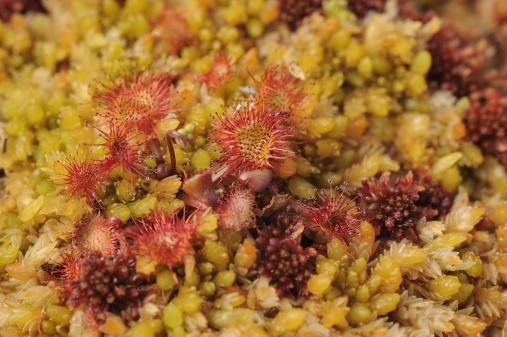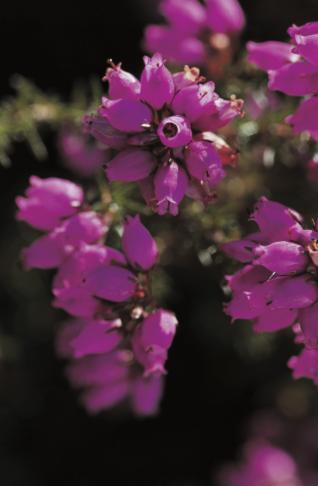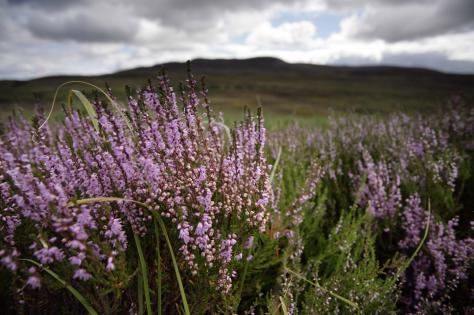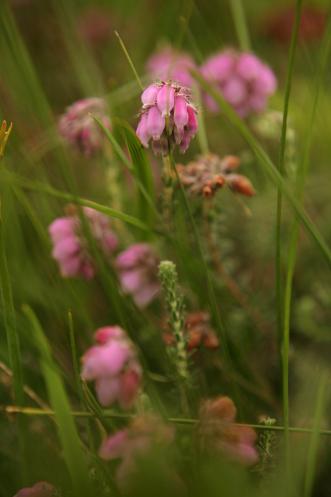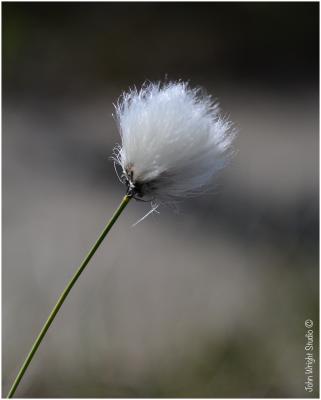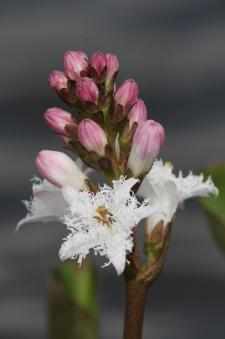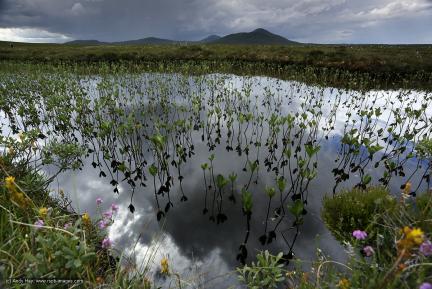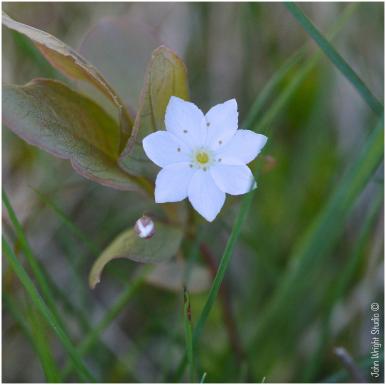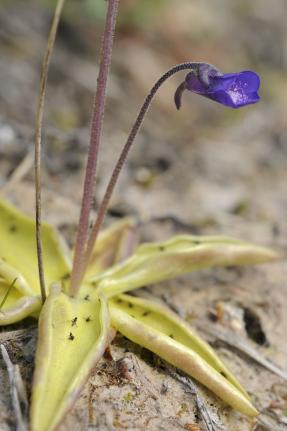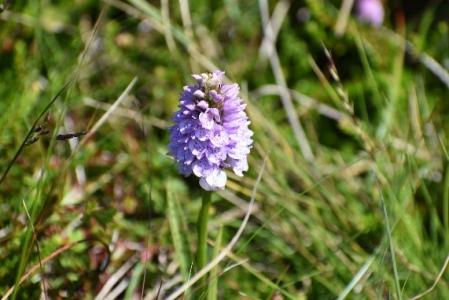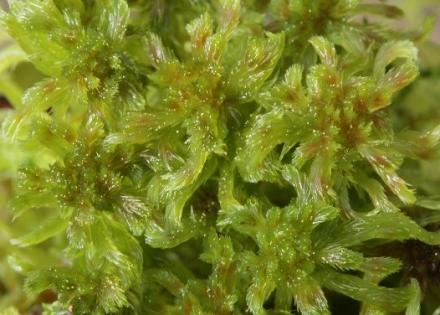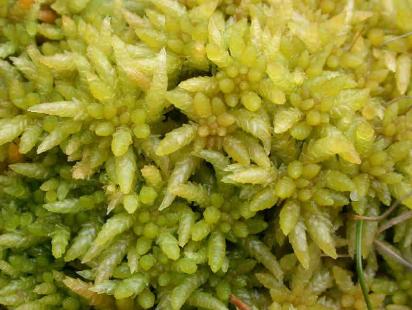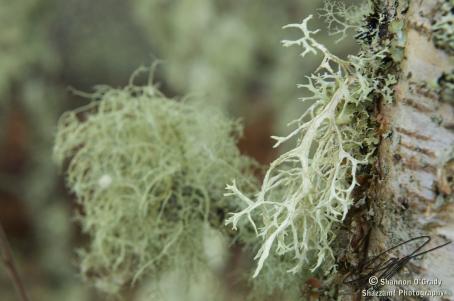Round leaved sundew (Drosera rotundifolia)
Photo credit: Lorne Gill |
Most likely to see: flowers June - August Habitat: within and near sphagnum moss on peatland and heathlands. More information: https://www.wildlifetrusts.org/wildlife-explorer/wildflowers/round-leaved-sundew https://www.plantlife.org.uk/uk/discover-wild-plants-nature/plant-fungi-species/round-leaved-sundew |
|
Most likely to see: Summer Habitat: heathland, moorland and wetlands More information: https://www.centralcoastbiodiversity.org/great-sundew-bull-drosera-anglica.html http://www.luontoportti.com/suomi/en/kukkakasvit/great-sundew |
Great sundew (Drosera anglica)
Photo credit: Sam Udale-Smith |
Bell heather (Erica cinerea)
Photo credit: Andy Hay |
Most likely to see: year-round, flowers July - September. Habitat: heathland, moorland and woodland More information: https://www.wildlifetrusts.org/wildlife-explorer/wildflowers/bell-heather https://www.plantlife.org.uk/uk/discover-wild-plants-nature/plant-fungi-species/bell-heather |
|
Most likely to see: flowers in July but present year round Habitat: heaths, moors and bogs More information: https://www.virtualheb.co.uk/ling-heather-purple-wildflowers-western-isles/ https://www.wildlifetrusts.org/wildlife-explorer/wildflowers/heather |
Ling heather (Calluna vulgaris)
Photo credit: Andy Hay |
Cross-leaved heath (Erica tetralix)
Photo credit: Andy Hay |
Most likely to see: year-round, flowing from June - September Habitat: heathland and moorland More information: https://www.wildlifetrusts.org/wildlife-explorer/wildflowers/cross-leaved-heath https://scottishwildlifetrust.org.uk/species/cross-leaved-heath/ |
|
Most likely to see: flowers April - June Habitat: wetland areas More information: https://www.plantlife.org.uk/uk/discover-wild-plants-nature/plant-fungi-species/cotton-grass-common |
Common cotton grass (Eriophorum angustifolium)
Photo credit: John Wright |
Bog myrtle (Myrica gale)
Photo credit: Andy Hay |
Most likely to see: year round Habitat: heathland, moorland and bog areas More information: https://treesforlife.org.uk/forest/species-profiles/bog-myrtle/ |
|
Most likely to see: June - September Habitat: peat bogs, damp heaths and moorland More information: https://www.wildlifetrusts.org/wildlife-explorer/wildflowers/bog-asphodel https://www.plantlife.org.uk/uk/discover-wild-plants-nature/plant-fungi-species/bog-asphodel |
Bog asphodel (Narthecium ossifragum)Photo credit: Clara Risi |
Bogbean (Menyanthes trifoliata)
Photo credit: John Wright. Without flowers: Andy Hay |
Most likely to see: flowers March – June. Present throughout the summer Habitat: ponds, bogs and marshes More information: https://www.wildlifetrusts.org/wildlife-explorer/wildflowers/bogbean https://www.plantlife.org.uk/uk/discover-wild-plants-nature/plant-fungi-species/bogbean |
|
Most likely to see: May - June Habitat: broad-leaf forests, swamps, fell heaths and wooded meadows More information: http://www.luontoportti.com/suomi/en/kukkakasvit/chickweed-wintergreen |
Chickweed wintergreen (Trientalis europaea)
Photo credit: John Wright |
Butterwort (Pinguicula vulgaris)
Photo credit: Laurie Campbell |
Most likely to see: May - July Habitat: bogs, fens and wet heaths More information: https://www.plantlife.org.uk/uk/discover-wild-plants-nature/plant-fungi-species/butterwort-common https://www.wildlifetrusts.org/wildlife-explorer/wildflowers/common-butterwort |
|
Most likely to see: June - August Habitat: upland, wetland, woodland and grassland More information: https://www.plantlife.org.uk/uk/discover-wild-plants-nature/plant-fungi-species/heath-spotted-orchid |
Heath spotted-orchid (Dactylorhiza maculata)
Photo credit: Clara Risi |
Sphagnum cuspidatum
Photo credit: unknown |
Most likely to see: year round Habitat: only occurs underwater in pools or bog areas More information: https://rbg-web2.rbge.org.uk/bbs/Activities/mosses/Sphagnum%20cuspidatum.pdf https://www.moorsforthefuture.org.uk/__data/assets/pdf_file/0017/1421603/Sphagnum-guide-MoorMOSS-Factsheet.pdf |
|
Most likely to see: year round Habitat: edges of bogs, fens and peatlands This is one of the most important peat forming species. Read more about peat formation here More information: https://www.centralcoastbiodiversity.org/small-red-peat-moss-bull-sphagnum-capillifolium.html |
Sphagnum capillifolium Photo credit: Clara Risi |
Sphagnum papillosum
Photo credit: unknown |
Most likely to see: year round Habitat: raised or blanket bogs This is another moss species and one of the most important in the formation of peat in the Flow Country. Read more about sphagnum in the blanket bog here More information: https://rbg-web2.rbge.org.uk/bbs/Activities/mosses/Sphagnum%20papillosum.pdf https://www.centralcoastbiodiversity.org/fat-bog-moss-bull-sphagnum-papillosum.html |
|
Most likely to see: year round Habitat: often found growing on birch and conifer trees More information: https://www.grassrootsremedies.co.uk/2017/01/20/herb-profile-old-mans-beard-lichen/ |
Fishbone lichen (Usnea spp.)
Photo credit: Shannon O’Grady |



